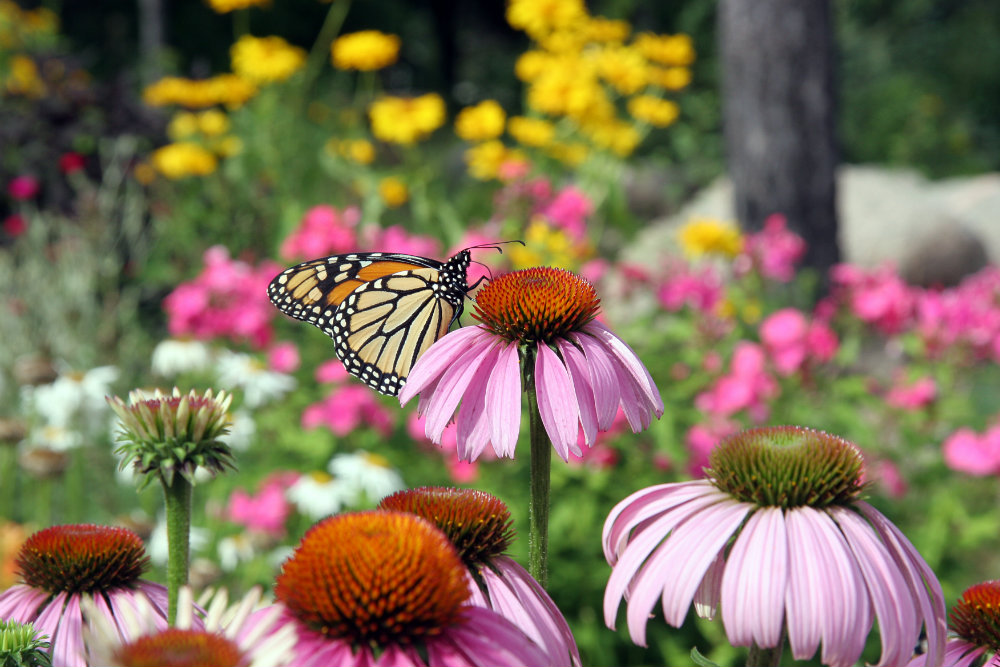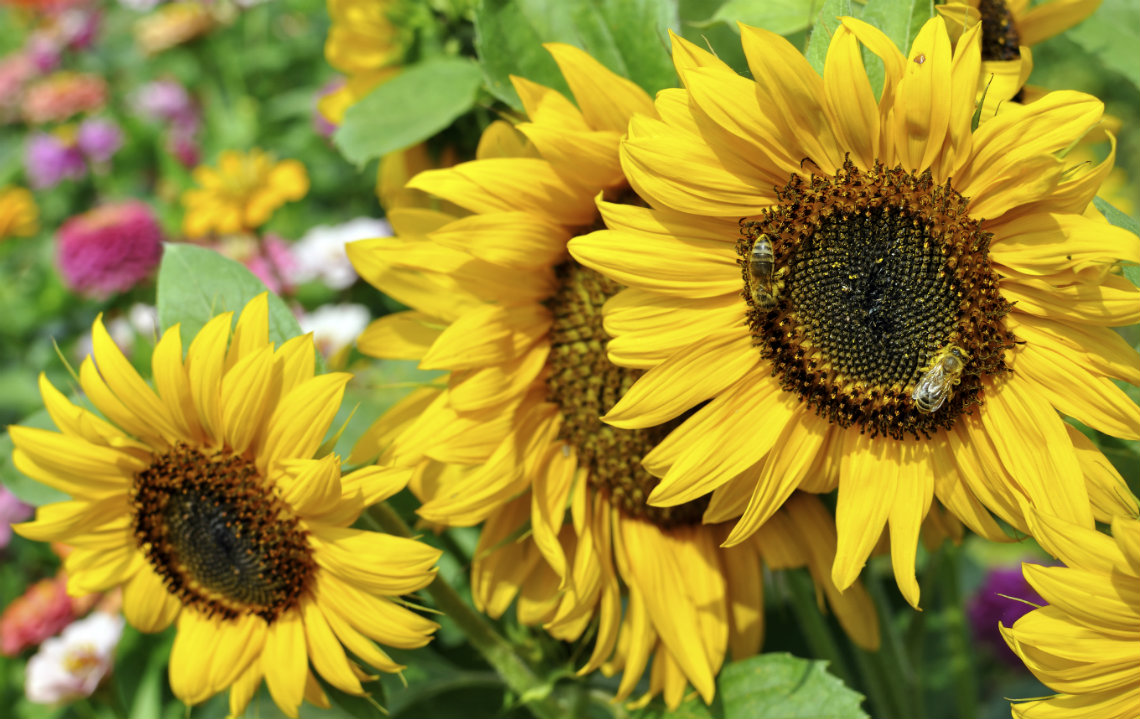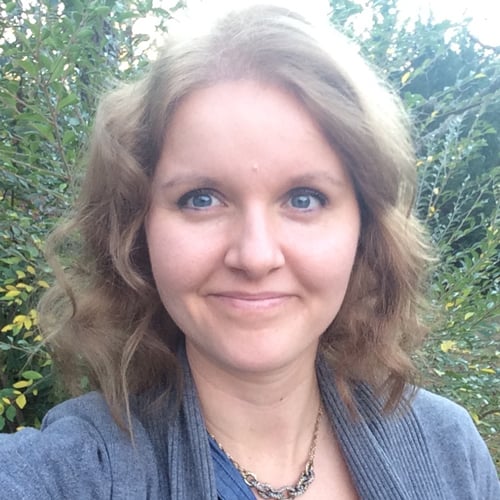After a dangerous decline in America's honeybee population, we offer tips for individual gardeners looking to help pollinators by planting what they need
Due to the sad decline in honeybee populations nationwide, pollinator gardens have become a popular way for gardeners, environmentalists, farmers and concerned citizens to make a difference to this global issue.
As a landowner, hobby farmer or homesteader this is one simple way you can use your land to make a BIG impact on our nation’s food supply - not to mention the health of  the plants growing on your own property.
the plants growing on your own property.
According to the USDA, 80% of the world’s flowering plants rely on pollinators to produce seeds, fruits, and vegetables.
In the United States, pollinators are responsible for $10 billion in food crops per year.
Do you like berries? Watermelon? Okra? Oranges? Tangelos? Squash? Apples? Peppers? Beets? These represent just a fraction of the local produce that would disappear without pollinators.
The good news is planning and planting a successful and beautiful pollinator garden on your land (whether you have a tiny garden or acreage) is as simple as it is satisfying.
 All you need is a little know-how on:
All you need is a little know-how on:
- Native Southern pollinators;
- Which plants and other garden features they like; and
- How to design your pollinator garden for maximum benefit.
We’ve got your covered with expert advice and resources to teach you how to plant a pollinator garden in the South.
Meet your Southern Pollinators
Did you know there are more than 1000 types of pollinators throughout the world?
They are mostly insects like beetles, ants and bees, but birds, bats and other small mammals are also important pollinators.
Here are the native players you want to attract in the Southeastern United States:
- All species of bees (honeybees, bumblebees, carpenter bees, etc. Bees are the #1 pollinators of flowering plants)
- Butterflies
- Moths
- Hummingbirds
- Flower beetles
- Hover flies
- Pollen wasps
All these pollinators are attracted to different types of plants. We'll talk about some of their favorite plants next.

How to Attract Pollinators to your Garden, Landscape or Farm
- Go heavy on native plants—in the South we have a lot of options. Azaleas, black-eyed susans, native wildflowers, sunflowers, lavender and even dandelions are all excellent choices for the Southern pollinator garden.
For a full list of plants native to your area check out this free guide from Pollinator.org on Central Appalachian pollinators.
- Use plenty of color—different species of pollinators are attracted to different-colored flowers.
- Plant for diversity—you want to provide a variety of food sources to attract a variety of pollinators.
- Include some “shelter” plants—hummingbirds build their nests in trees or bushes; butterflies use broad leaves for shelter from the wind; and every pollinator needs protection from storms. Think broad-leaf plants (like burdock), shrubs and trees.
- Plant in clumps—pollinators are more likely to be attracted to big clumps of the same type of flowers, bushes, etc.
- Plant for constant flower production throughout the growing season—this ensures a steady supply of food for pollinators and a steady stream of beautiful color throughout the long Southern growing season.
- Provide a clean, consistent source of water—a shallow pond, bird bath, or sloped water feature all work. Make it shallow enough so pollinators can drink without drowning.
- Keep some space clear and messy—some types of pollinators like to make their nests in the ground or under dead leaves.
What Pollinators Don’t Like
To sum it up in two words, pollinators don't like: pesticides and insecticides.
Though many of us think nothing of spraying our gardens to keep pests away, research has proven that overuse of synthetic pesticides is a leading cause of the decline in pollinators—specifically bees.
Research has also shown that synthetic pesticides and insecticides cause serious diseases in human adults and children, and can end up depleting your soil over time.
Bottom line: it’s in everyone’s best interests to find non-toxic solutions…and it’s never been easier.
If you’re not sure how to maintain a healthy garden without pesticides, this article from Mother Earth News: “Organic Pest Control, What Works What Doesn’t?” offers an excellent starting point.
It includes the results of a survey of more than 1300 gardeners who offer region-specific advice on best organic pest control practices.
But, “buyer beware” when purchasing natural pesticides or insecticides from big box stores.
Often these products are manufactured by the same companies that make the toxic stuff, and they're not 100% natural. So be sure to read labels carefully.
You can purchase natural pesticide products from a trusted organic gardening store or an online vendor like Johnny’s Seeds.
You can also make your own.
Many homemade pesticides or insecticides such as natural soap sprays, cayenne pepper sprays, or even using boiling water to kill weeds, work just as well as the pre-made products -- but for a fraction of the cost.
Another way to naturally keep pests away is to build up your garden soil using organic compost, soil amendments and other non-toxic fertilizers like Epsom salts or fish emulsion.
When your soil is treated organically, it produces naturally hardier plants that are less prone to attract pests and harbor disease.
Finally, if you live on a farm or hobby farm, why not let your animals do the work?
Ducks eat slugs, guinea hens feast on ticks. A skilled farmer can even use goats to control poison ivy. And all these animals fertilize as they go -- a win-win-win.
If you use landscapers or gardeners, be sure to inform them of your wishes when it comes to pesticide use on your lawns and gardens.
What to do if you feel you MUST use a synthetic pesticide or insecticide
The US Fish and Wildlife Service recommends:
“If you must use a pesticide, choose one that is the least toxic to non-pest species, does not persist on vegetation, and apply it in the evening when most pollinators are not as active.”
If you live near a beekeeper it is also common courtesy to notify them if you plan to spray so they can keep their bees inside until the spray subsides.
For more information on choosing the least toxic synthetic pesticides visit: http://www.fws.gov/pollinators/PollinatorPages/YourHelp.html#pesticide
More Resources for your Southern Pollinator Garden
- Pollinator.org has an awesome FREE guide on everything you need to know about pollinators and native plants for your region. Just pop in your zip code and go, check it out here.
- Xerces also offers a list of native plants PLUS a full run-down of native pollinator plant nurseries throughout the Southeast. Get yours here.
- The Million Pollinator Garden Challenge is a non-profit with the sole purpose of helping Americans create 1 million pollinator gardens to replenish pollinator populations.
Register your pollinator garden to “bee counted,” download free courses and advice, and get information on how to start a pollinator program in your local school.
Designing and planting a pollinator garden not only brings beauty and diversity to your land, but it provides a much-needed sanctuary for our nation’s much-needed pollinator species.
This combined with the added benefit of better ecological control of unwanted pests—through soil regeneration and plants that attract their natural predators—makes installing a pollinator garden a satisfying and smart choice to re-green our planet.

























